The Ultimate Guide to Choosing a Bed Frame: Every Style That Matters (and How to Pick Yours)
Before you commit to a bed frame, here’s everything sleep-savvy designers consider first

Sarah Warwick
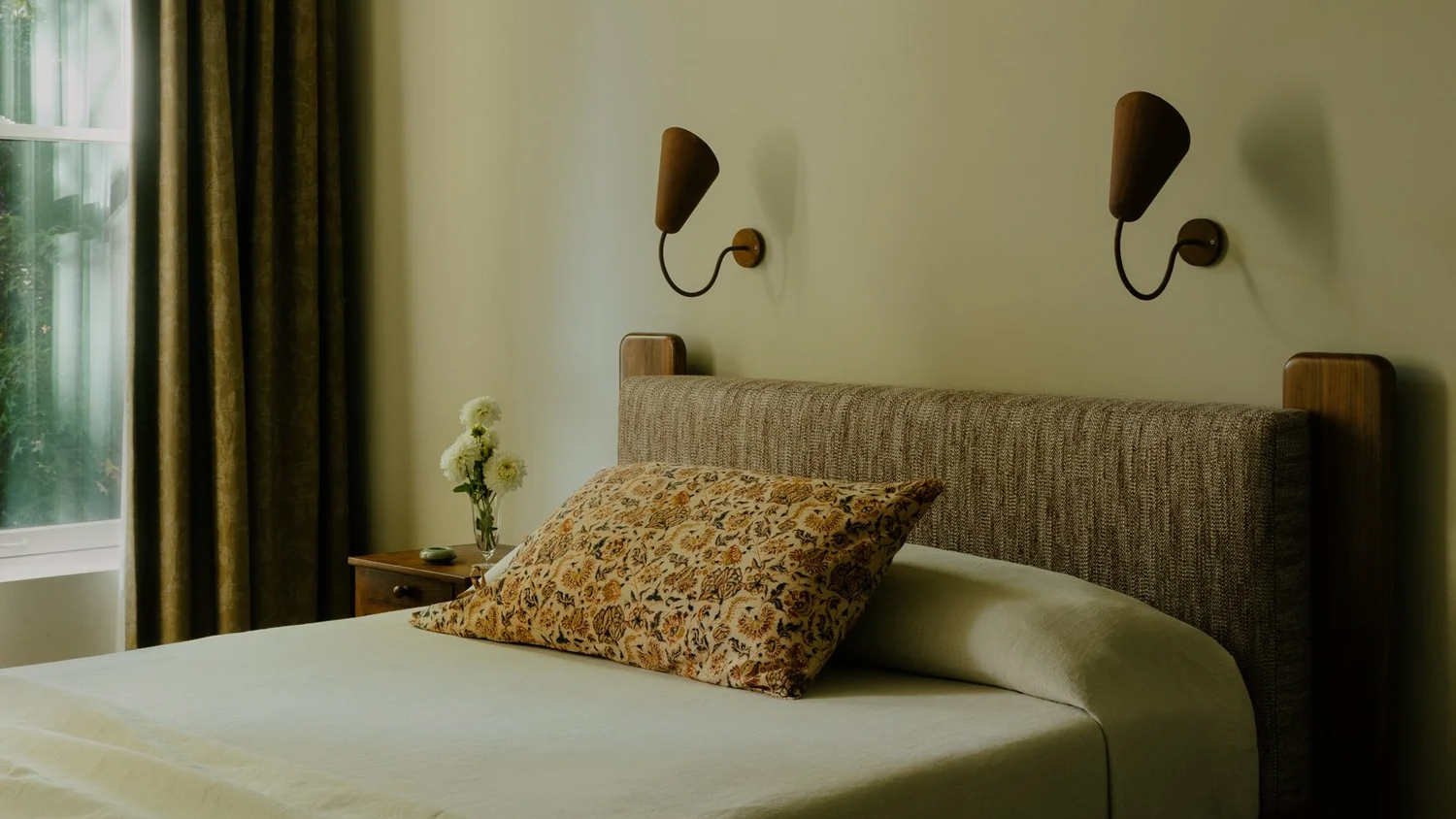
You’ll spend more time perched on your bed frame than on your sofa, and your bedroom will spend more visual energy on your bed than on anything else. We sleep for a third of our lives, and the bed frame – by sheer scale alone – decides the entire attitude of a room. A slim, architectural frame says one thing; a dramatic canopy or pragmatic bunk bed says something else entirely.
Function, of course, can unravel your new-frame fantasy if you ignore it. How tall are you? Do you share the bed? How generous (or not) is your square footage? Are you looking for a renter-friendly frame you won’t feel guilty abandoning, or the forever piece you’ll move from home to home? And, perhaps most crucially: do you already own a mattress you adore? Not every frame plays nicely with every mattress; compatibility matters if you want comfort and longevity. Your answers to these questions will inevitably steer you toward certain silhouettes and materials over others.
Choosing a bed frame is one of the most consequential design decisions you’ll make – so treat it accordingly. Ahead, we break down every bed type you’re likely to encounter: why it’s great, where it falters, and what it’s actually like to live with – plus a granular guide to choosing the right one for the way you sleep, live, and design. Consider this your blueprint to a better bedroom and, ideally, a better night’s sleep.
Bed Frame Types
Before you fall for a frame, take stock of the basics: the dimensions of your bedroom, how much breathing space you want around the bed, and the overall mood you’re after – perhaps it's classic, modern, or something you've been swooning over on Instagram. With these components in mind, here are the major bed frame types worth knowing.
1. Platform Bed Frames

A platform bed is exactly what it sounds like: a simple, streamlined base that supports your mattress without the need for a box spring. It’s a base and frame in one, which makes it an ideal bed for small rooms or for renters who don’t want to commit to bulky furniture.
Because they sit low and keep a tight profile, platform beds have an inherently modern look. Clean lines, no ornamentation, nothing to distract the eye. You’ll mostly see them in wood or metal, though upholstered versions are having their moment too. Many arrive without a headboard or footboard, which is less a drawback than an opportunity if you prefer to build the look yourself.
If storage is non-negotiable, you can always choose a platform with drawers tucked underneath. It keeps the minimalist silhouette intact while handling any overflow.
Design expertise in your inbox – from inspiring decorating ideas and beautiful celebrity homes to practical gardening advice and shopping round-ups.
Just know what you’re signing up for. Platform beds often feel firmer, and being closer to the ground changes how you get in and out of bed. Think about your mobility, the height you actually like to sleep at, and how you move through your nightly rituals before committing.
2. Floating and Minimalist Frames
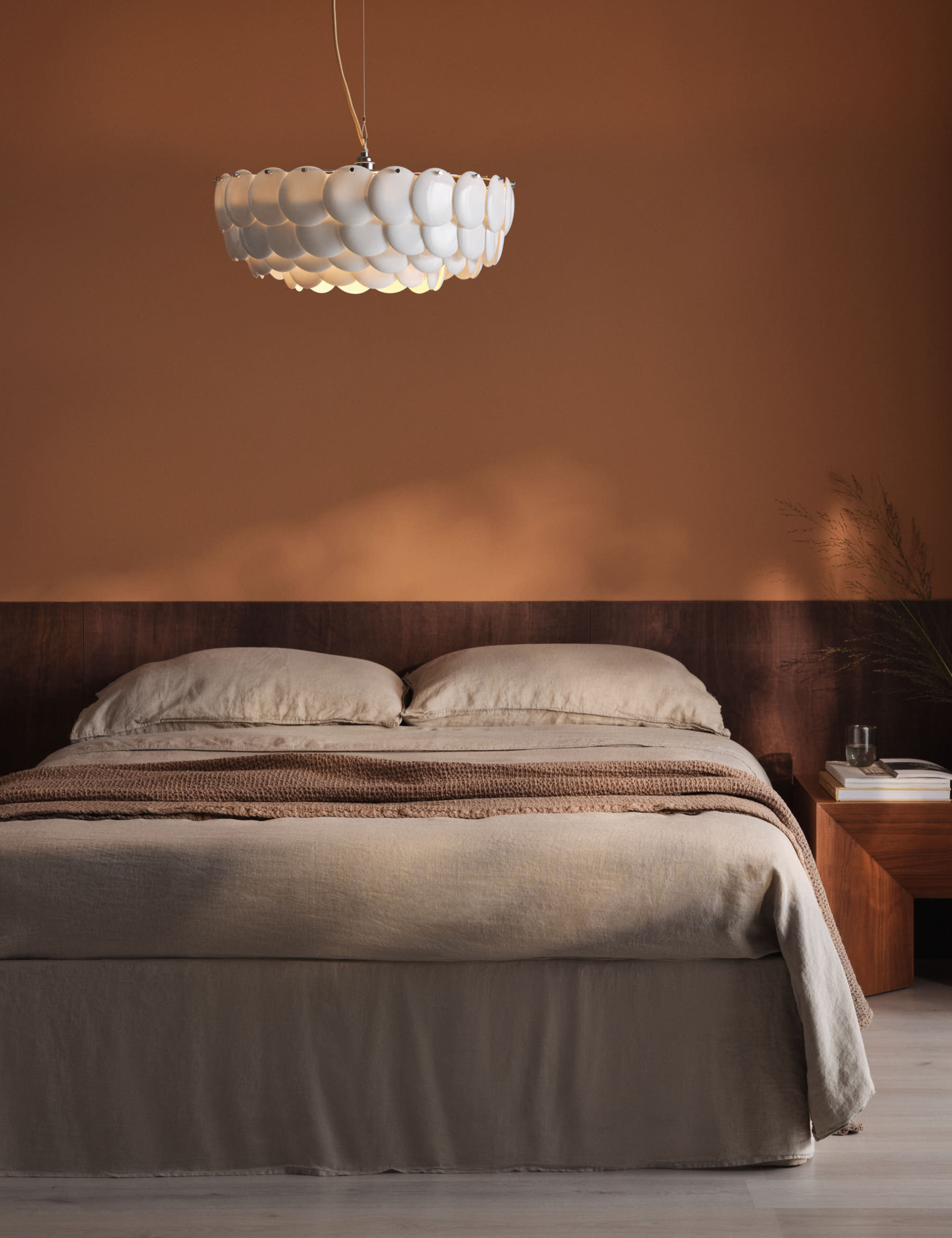
Floating bed frames sit in the same family as platform beds (low, modern, and usually headboard-less), but they’re after a different trick. Where a platform keeps its structure visible, a floating frame hides the mechanics so the bed appears to hover. The legs are still there (unless you’re going full suspension-from-the-ceiling), but they’re tucked back or disguised to create the illusion.
For minimalists, it’s the same aesthetic discipline with a little more pizzazz. In fact, it’s arguably the most avant-garde option in the entire bed frame category, leaning slightly space-age in a way that gives minimalist bedrooms a real statement.
They’re not everywhere yet, but floating bed frames are having a moment in wellness-leaning markets like Los Angeles, where this spa-like look is very much in vogue. Retailers like Rove Concepts are making them easier to source, turning what used to be a niche, editorial choice into a genuinely viable option.
3. Panel Bed Frames
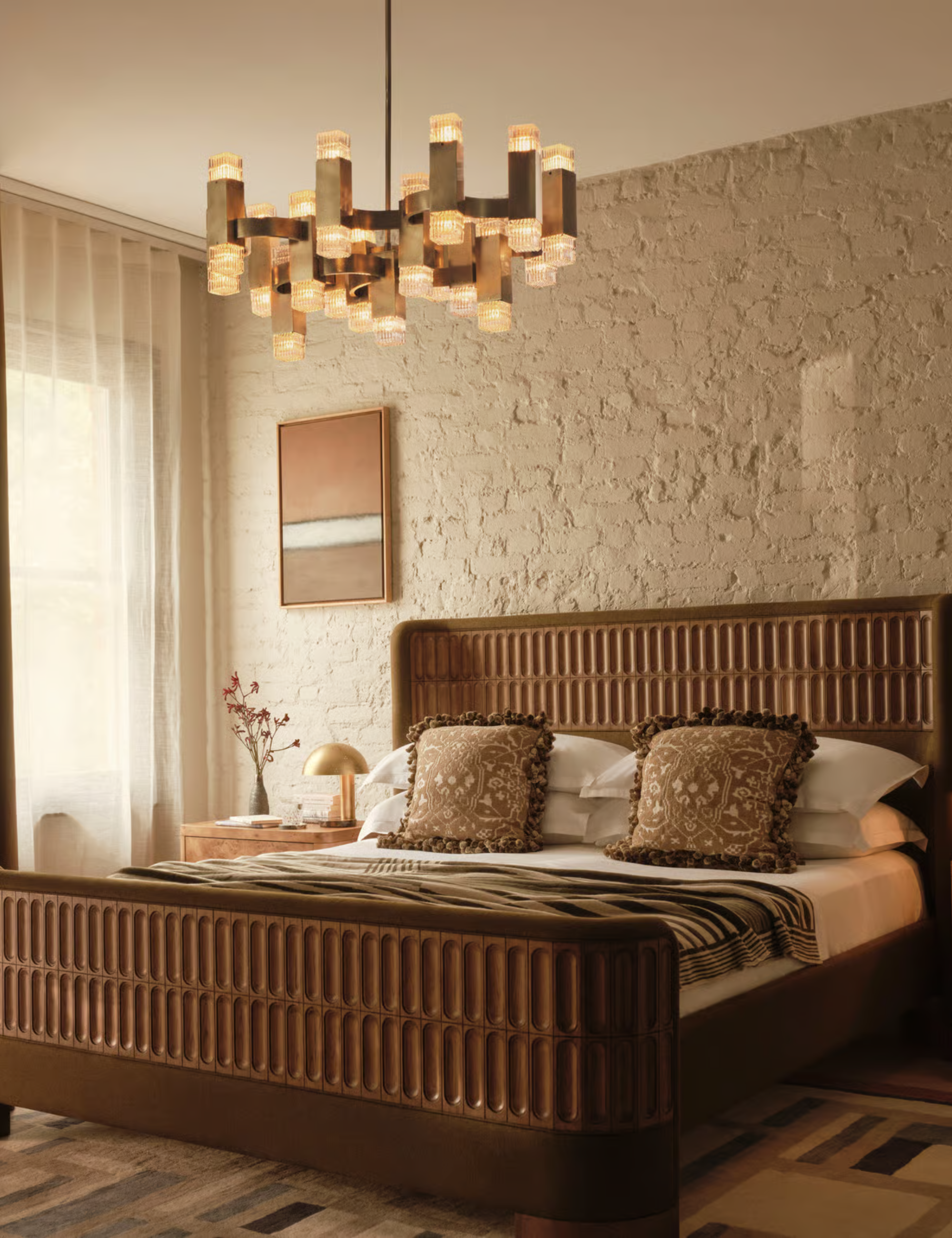
Panel bed frames are what most people picture when they think ‘bed.’ It’s the classic two-part system: frame plus support, which gives you that lifted, traditional silhouette that looks at home in everything from a brownstone guest room to a grandparent-coded primary suite.
They’re usually wood or metal, sometimes upholstered, almost always armed with a headboard and occasionally a footboard. Side rails show up often too. That extra height makes getting in and out easier, and it buys you space underneath for bins, baskets, or other storage wants.
The one catch is that box spring. It’s a separate purchase, and the total can creep up once you factor in the mattress too. The upside is choice – panel beds exist at every price point and personality, from the big-box basics at Walmart and Wayfair to the more tailored, design-forward interpretations at places like Soho Home.
4. Canopy and Four-Poster Bed Frames

Yes, you can absolutely live out your fairytale phase as an adult. A four-poster bed frame is impossible to ignore, offering four posts, a strong silhouette, and a built-in sense of drama. If you want your bed to feel like a moment, this is the moment.
Draping fabric over the frame turns it into a true canopy, and that’s an identity you can switch in and out depending on your mood. Sheers make it romantic, heavier textiles dial up the theatrics, and minimalist purists can leave the posts bare for a sculptural look.
Most four-poster bed frames come in wood, but brands like CB2, West Elm, and Maiden Home are proving that metal versions can feel just as sleek – sometimes sleeker. The only real non-negotiable is height. Even if it technically fits, a canopy bed without enough overhead clearance can make a room feel compressed. They thrive best in spaces that let them breathe.
5. Sleigh Bed Frames
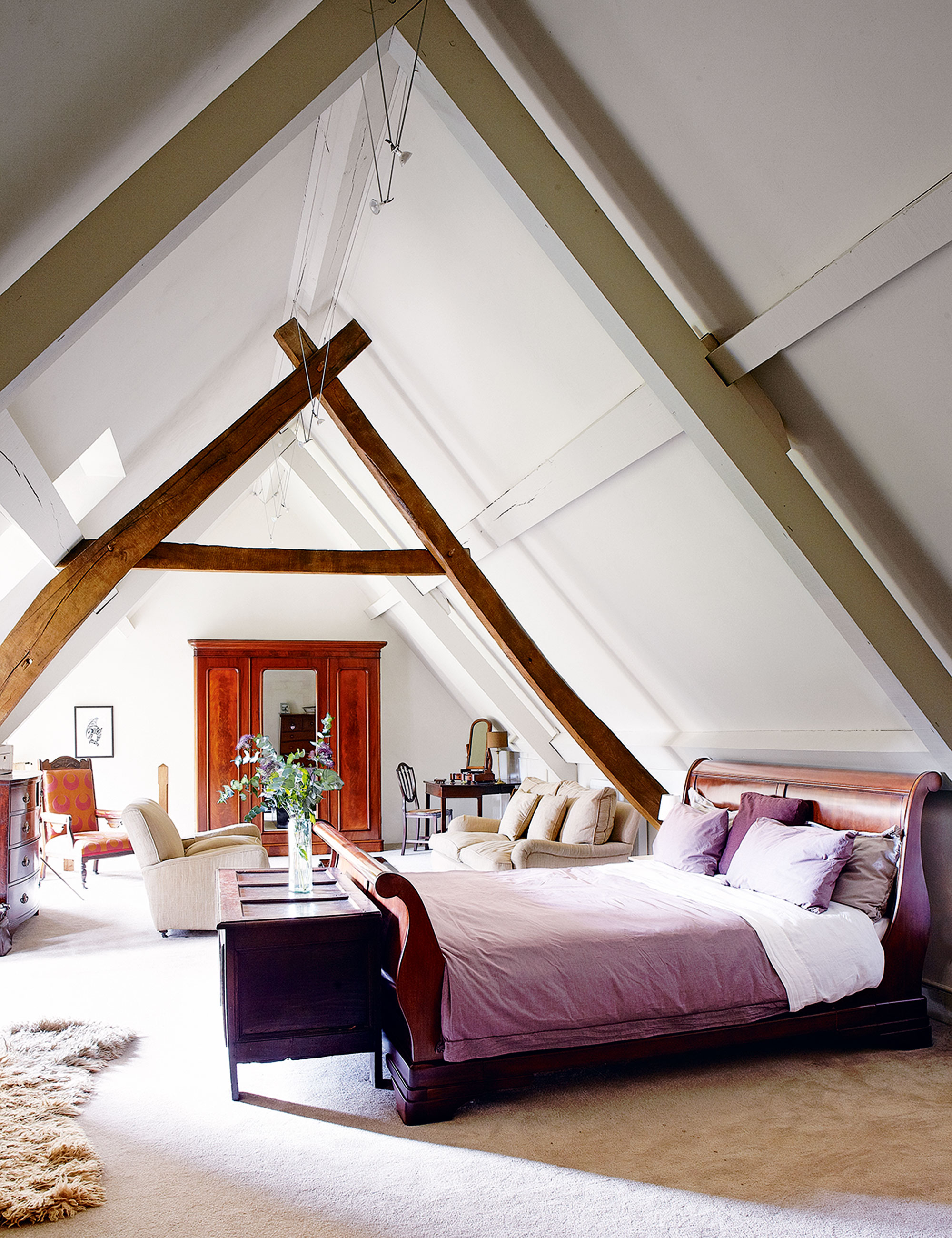
The sleigh bed is whimsical in name, unmistakable in silhouette. With its dramatically curved headboard and footboard, it has the same traditional presence as a four-poster, just without, you know... the actual posts. Its ‘sleigh’ profile is dramatic, gorgeous, and also enormous. Small spaces should sit this sleigh ride out.
If you’re looking to romanticize your bedroom – your mornings, your nights, your rituals – a sleigh bed will take you there. Classic versions come in carved wood, but newer takes from retailers like Anthropologie reinterpret the shape in upholstery, giving those same swooping lines a softer, more contemporary read.
6. Storage Bed Frames
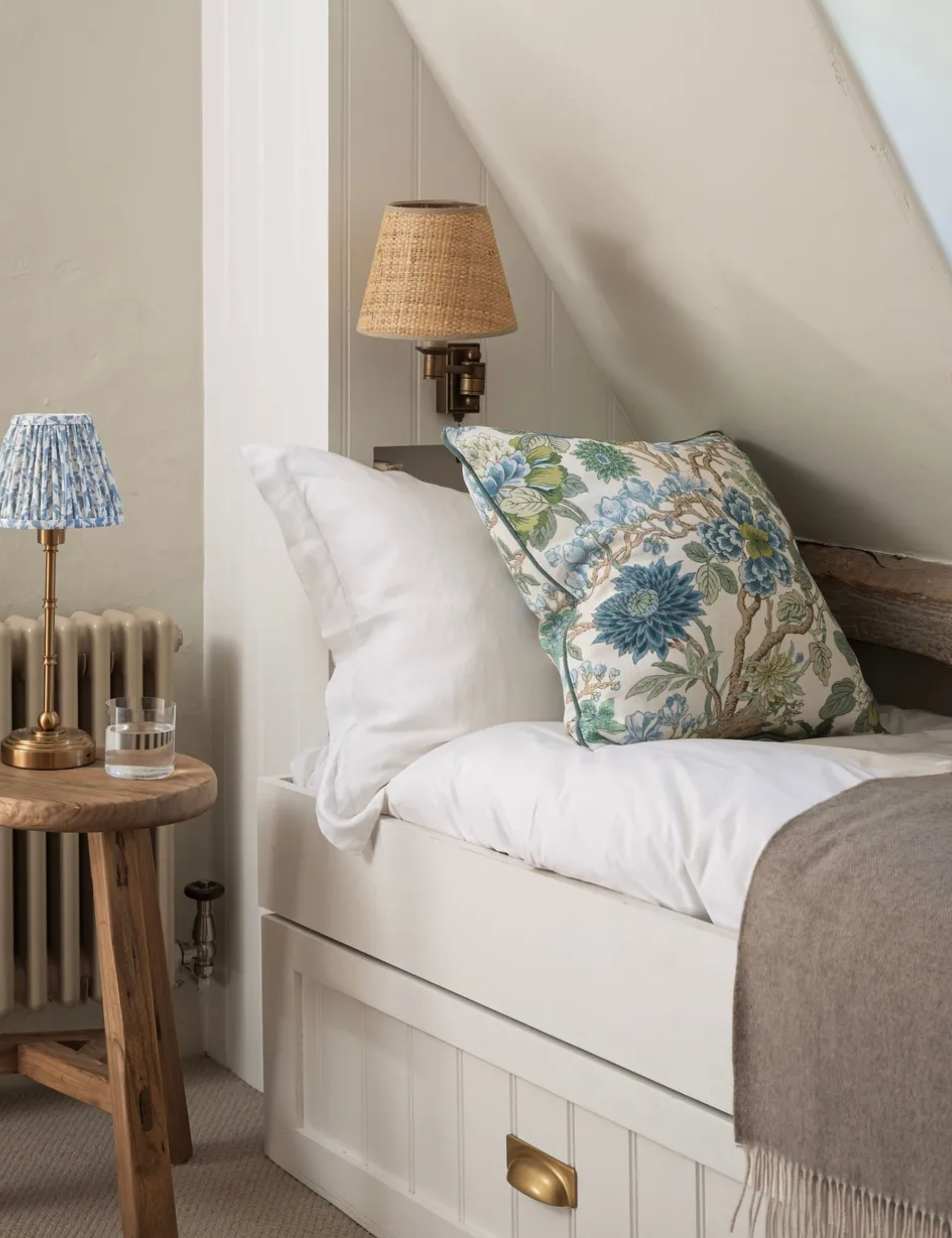
Some of us need a bed frame to do more than hold a mattress – we need it to hold… everything else. Storage bed frames exist for exactly that purpose. You’ll find two main approaches: lift-up platforms or built-in drawers, both ideal for stashing off-season clothes, spare bedding, or the miscellaneous items you’d rather not look at daily. It sounds utilitarian, but design-forward brands like Article have made these frames surprisingly elegant, complete with curved headboards and thoughtful proportions.
They’re a natural fit for apartment dwellers, petite rooms, or anyone allergic to visual clutter. Just note that the trade-off for all that hidden space is height (they tend to sit a bit taller) and heft. These frames can be weighty to move – though empty drawers do wonders if you’re attempting a one-person furniture migration.
7. Trundle Bed Frames
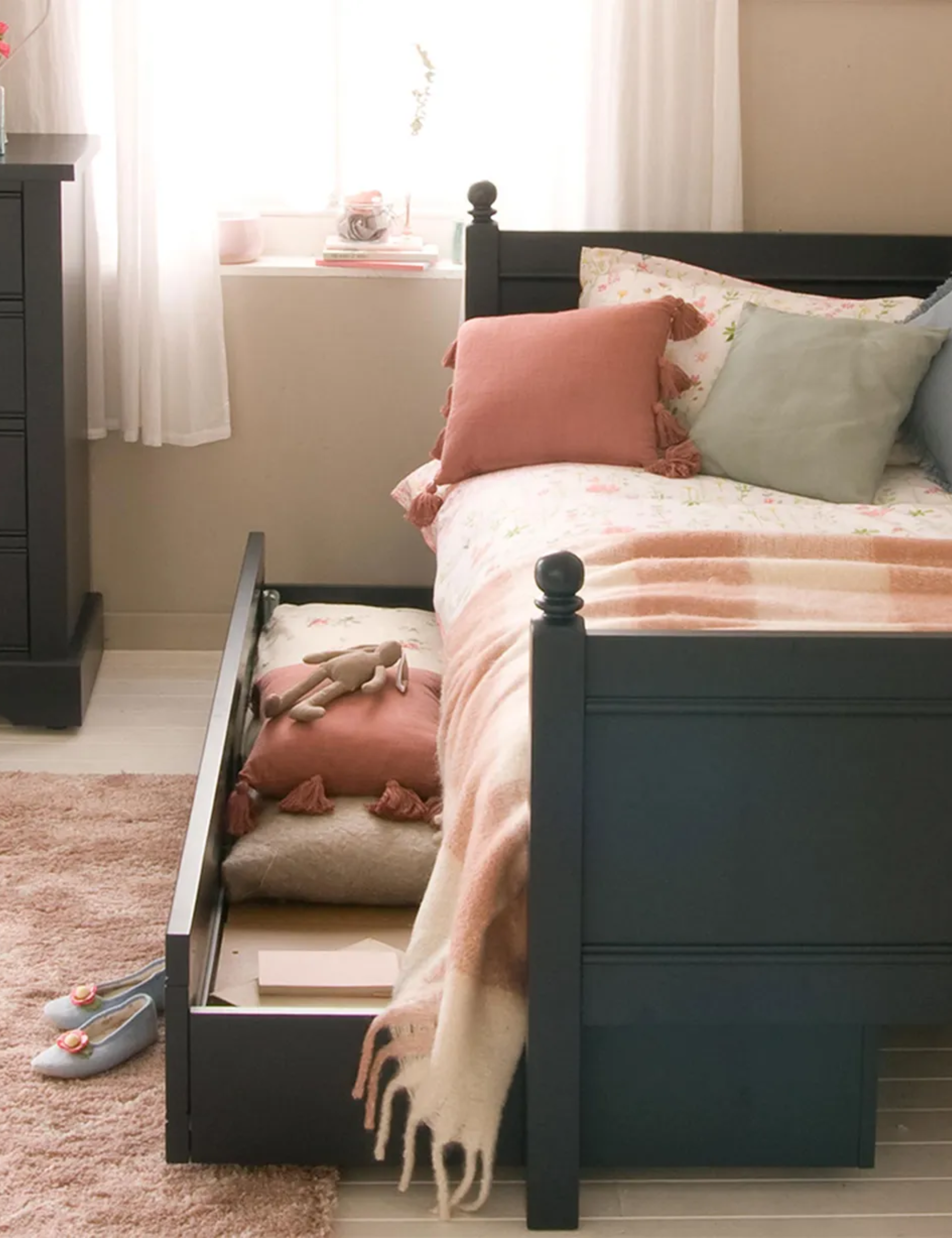
Trundle bed frames aren’t just for children’s rooms; they’re one of the few clever space-saving solutions that don’t require you to sentence guests to a pull-out sofa. (Nothing wrong with a pull-out… unless the stay is longer than 48 hours, at which point everyone silently wishes for a real mattress.)
A trundle, typically made from wood, metal, or MDF, hides a second bed beneath the first – keeping it out of sight, out of mind, and indistinguishable from a standard frame until the moment of reveal. Pull it out when you need it, tuck it away when you don’t.
There are caveats, of course. The lower bed is lower – practically floor level – which makes it less friendly for older sleepers. A few trundle models can elevate to match the height of the main bed, but they’re rare. Consider these the best type of bed frame for kids’ rooms, guest rooms that double as offices, or homes that need flexibility without forgoing fashion.
8. Bunk Bed Frames
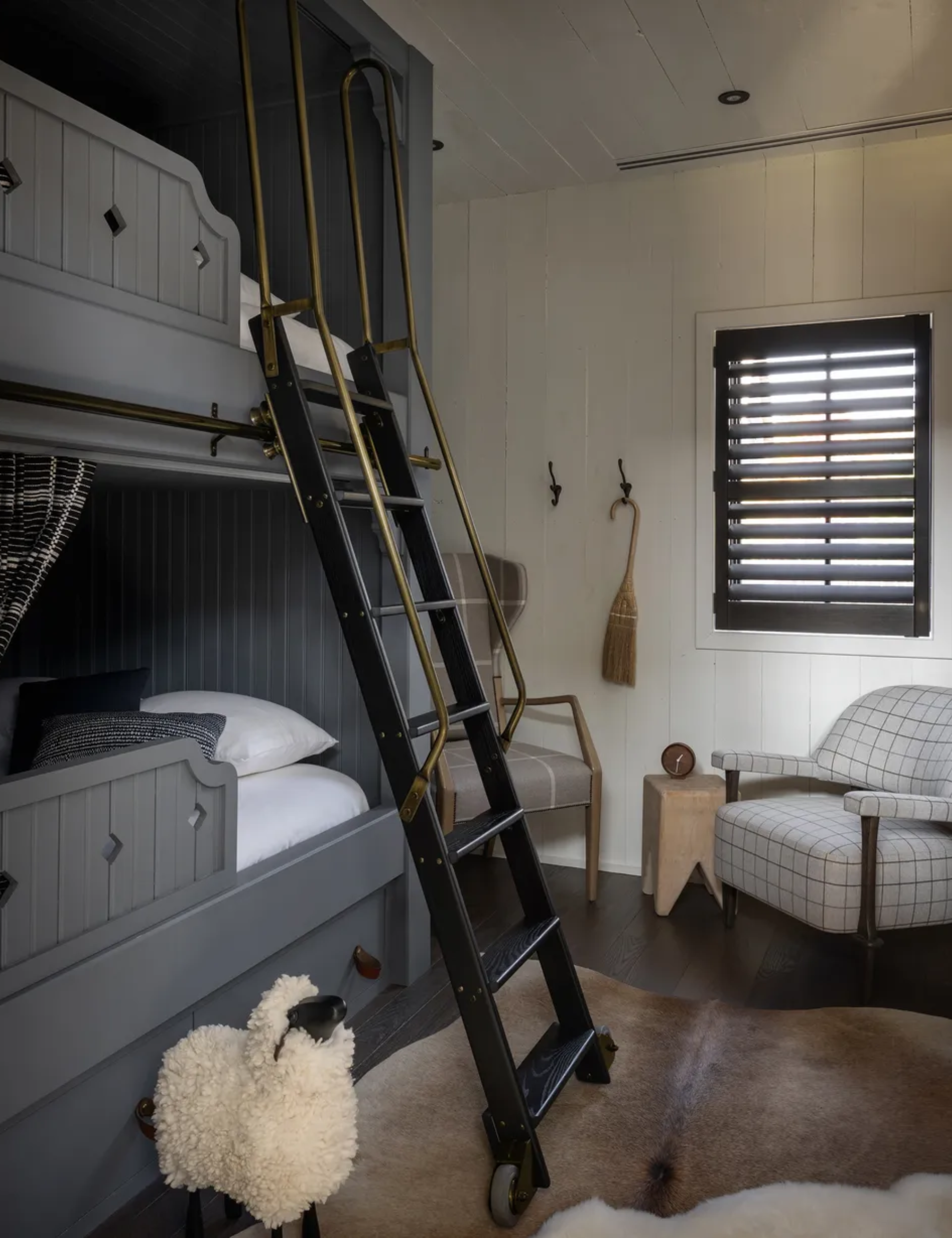
Bunk beds sit at the top of the 'kid stuff' category in desperate need of a rebrand – because the truth is, they’re far more adult-appropriate than their reputation suggests. The classic one-over-one configuration (great for siblings, of course) has evolved into genuinely chic, space-savvy arrangements: twin over full, full over queen, queen over king, and so on.
Constructed from wood, metal, or MDF, most come with a ladder or integrated stairs to reach the upper bunk. And don’t dismiss teen retailers outright – one of the most grown-up, design-forward iterations on the market right now comes from Pottery Barn Teen, which merges a lofted workspace with a full bed below.
Bunks are, fundamentally, a numbers game, accommodating more sleepers with less square footage. We’ve even seen them paired with a trundle to yield three beds in one footprint. Just be sure to check the upper-bunk weight capacity before committing.
9. Adjustable Bed Frames
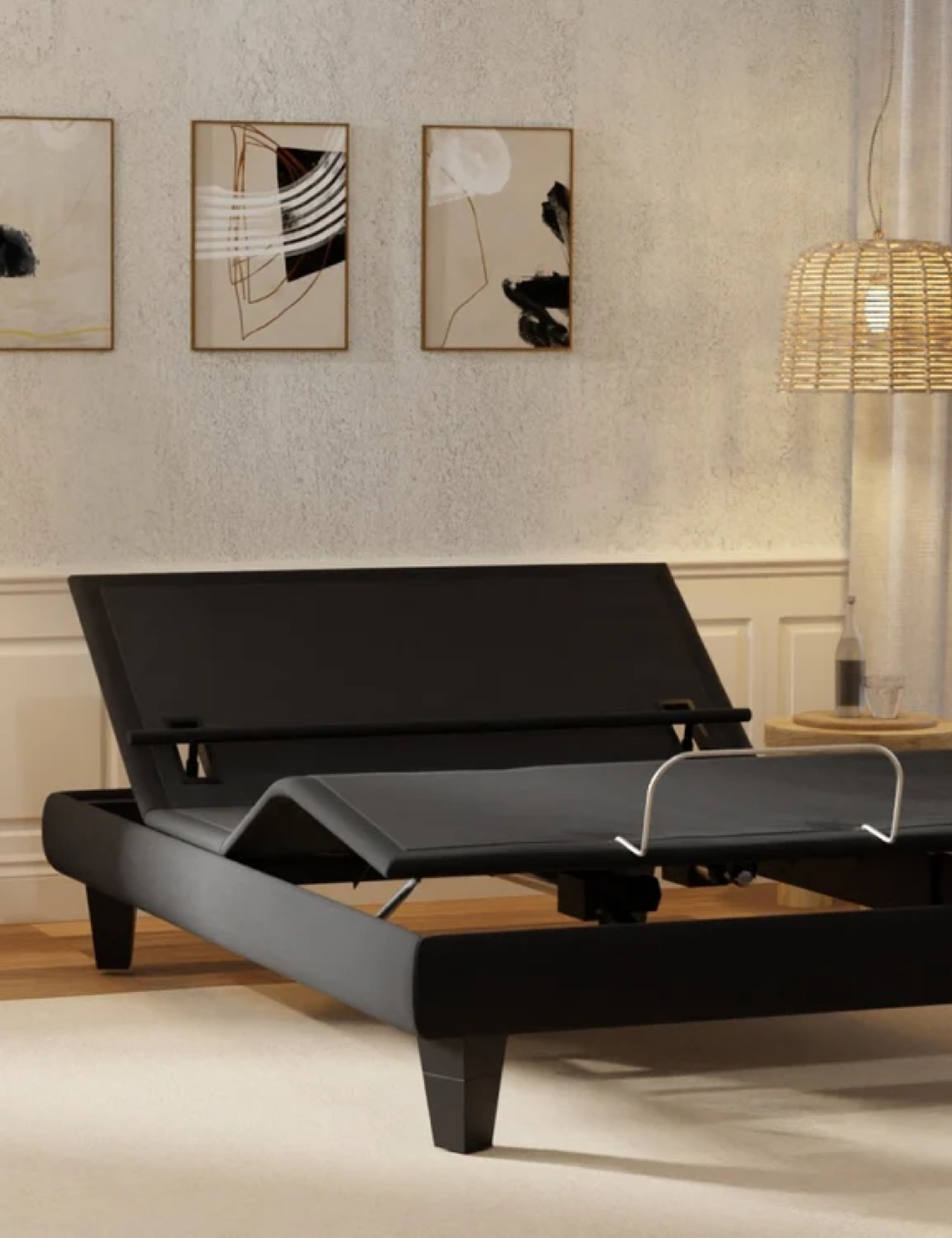
You buy a bed frame, and it stays put – or so you thought. With a motorized base that shifts to suit your needs, adjustable bed frames let you sit up comfortably to read, work, or watch TV, or elevate your head or feet while you sleep. It sounds high-maintenance, but in practice, it’s pretty simple: plug it in, press a button, watch your bed do its thing.
The only part that isn’t simple is the mattress. Not every mattress is flexible enough to bend. Adjustable bases tend to play best with memory foam or latex; innerspring models only work if they’re explicitly rated for it. In other words, check compatibility before you buy – for any frame, really, but especially here, where the entire point is movement.
10. Metal Bed Frames
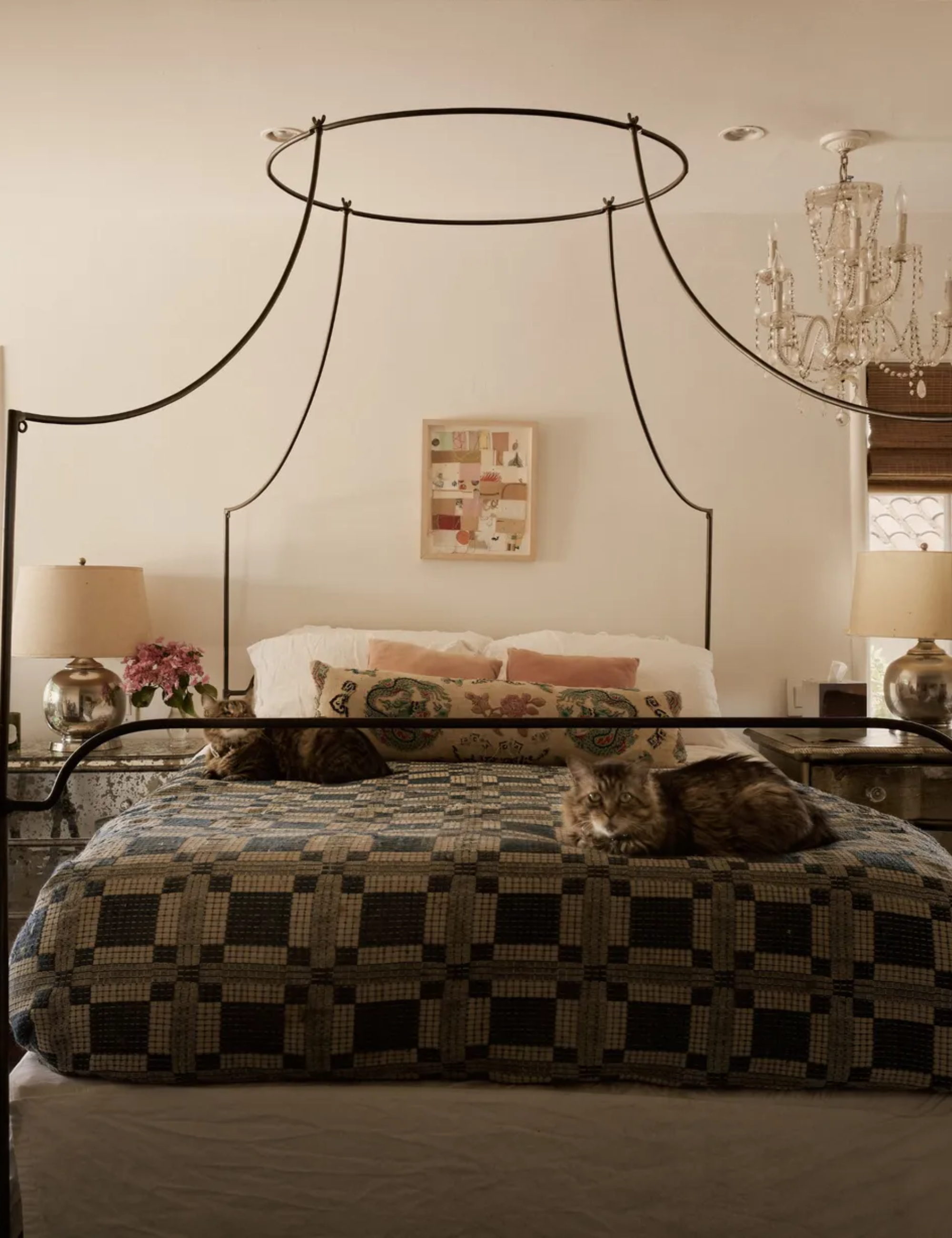
Metal shows up throughout this list, but it deserves its own moment. The material sounds industrial – and yes, it can skew cool and contemporary – but it’s far more adaptable than people give it credit for. Kathy Kuo Home, for instance, carries metal frames with an antique sensibility that feel airy and chic rather than hard-edged or traditional.
Metal bed frames are durable, often more affordable than ones made of solid wood, and are friendly to a range of aesthetics. But metal isn’t without quirks. It can rust. It can squeak. The pricier, more substantial builds tend to avoid both, while budget versions are more hit-or-miss.
If you’re shopping retailers with deep review sections (Wayfair, Amazon, Overstock), the comments are worth combing through for this category.
11. Upholstered Bed Frames

Upholstered bed frames are the sartorialists of the category. Solids or stripes? Creams or violets? Linen, velvet, leather? Each choice shifts the entire energy of a room, which is why these frames function like a true blank canvas. Choose wisely; it’s your chance to dress a bed the way you’d dress yourself.
Because the structure is wrapped, they’re also pretty quiet – those soft edges hush any potential squeaks. Prices run the gamut: synthetics and performance fabrics keep things accessible, while full leather or hand-treated linens can veer into the high four-figure range.
Just be honest with yourself: how clean is your real life? If you snack in bed (and truly, who among us doesn’t?), upholstery can show it. Stain resistance, maintenance, and longevity should be part of the decision before you commit to your dream fabric.
12. Wood Bed Frames
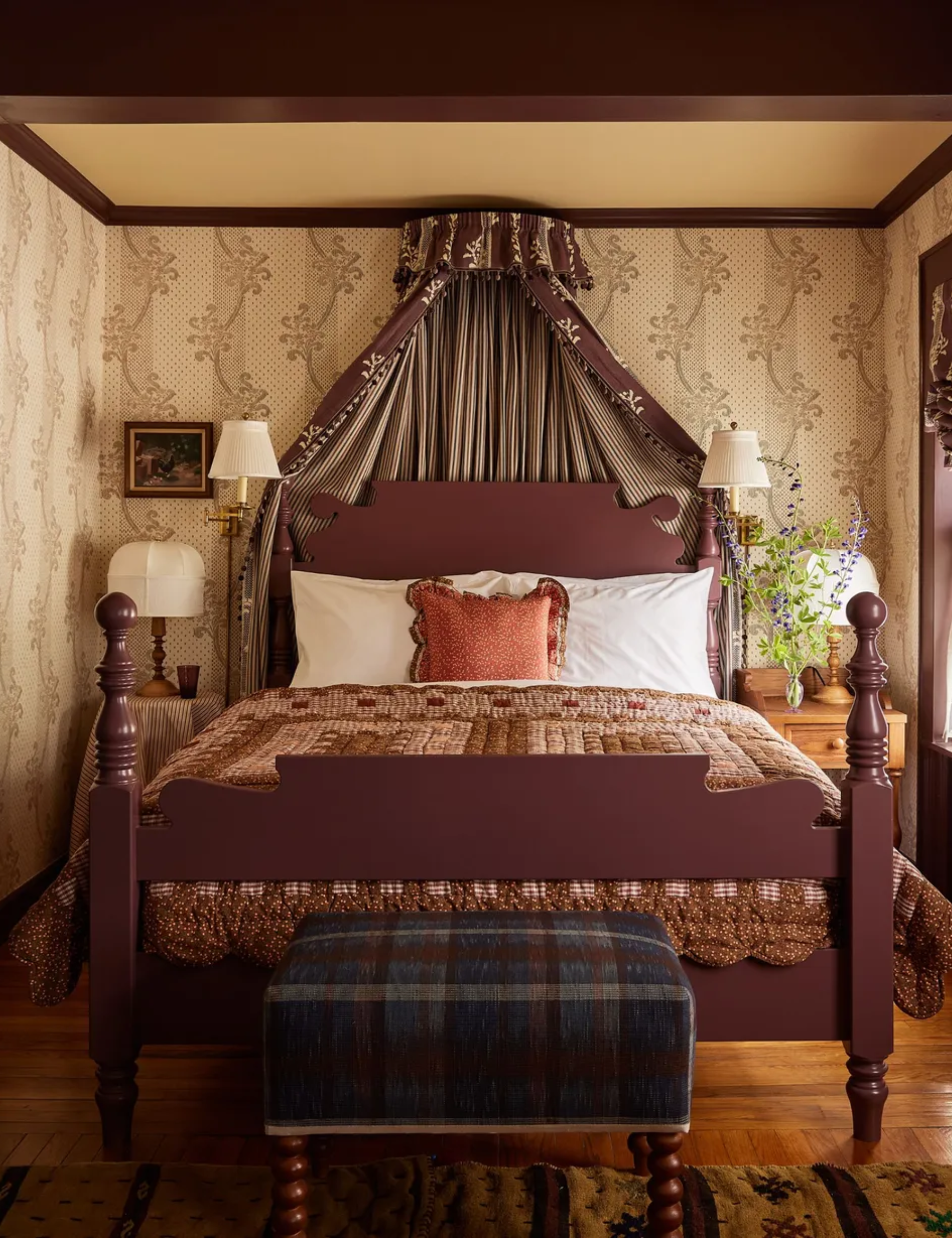
Wood frames cross-pollinate with nearly every bed category on this list. They’re the classic, the constant, the material that has anchored bedrooms for centuries. A wood frame brings warmth and permanence, whether you lean into a visible grain for something earthy and organic or opt for a stained or painted finish that feels more tailored.
If you’re looking for heirloom quality, this is the lane. Real wood offers longevity and protects your mattress in the process, saving you from frequent replacements. It’s also remarkably low-maintenance, which never hurts.
A quick PSA: not all ‘wood’ is created equal. MDF, a manufactured substitute, can mimic the look for less, but it won’t deliver the same caliber of stability or lifespan. Solid woods – elm, teak, acacia – resist warping, hold screws better, and create an overall sturdier construction. If you want a forever bed (or even a very-long-time bed), real wood is almost always the smarter move.
How to Choose the Best Bed for You
Now that you’ve met the main bed frame types, it’s time to get unromantic and think about logistics. The size of your room, the way you sleep, who you share the bed with (human or otherwise), and how long you plan to keep it – all of this should shape your decision. Below, the key considerations and questions to ask yourself before choosing a bed frame.
The Size of Your Room
Two to three feet of clearance on each side of the bed is the general rule – enough room to walk, make a bed, and not body-check a wall before coffee. Mind the swing of doors and the placement of windows; both can shrink your usable footprint faster than you’d think.
The logic is simple: a too-large bed in a small room feels overbearing, while a too-small bed in a large room looks lost. You’re aiming for proportional bedroom layout harmony. If you’re unsure, sketch a quick floor plan with measurements and block in your dream frame. The blank space left over will tell you everything.
Storage Needs
If bedroom storage is a constant battle, your frame needs to do more than sit pretty. This could mean a true storage bed with lift-up compartments or drawers, but even classic panel beds usually offer enough under-bed clearance for bins and baskets.
Minimalist bed frames are great for the eye, less great for stashing spare linens, sweaters, or the life detritus you don’t want in plain sight. Be honest about your habits. If you chronically run out of places to put things, that floating silhouette may not be the best type of bed frame for your actual lifestyle.
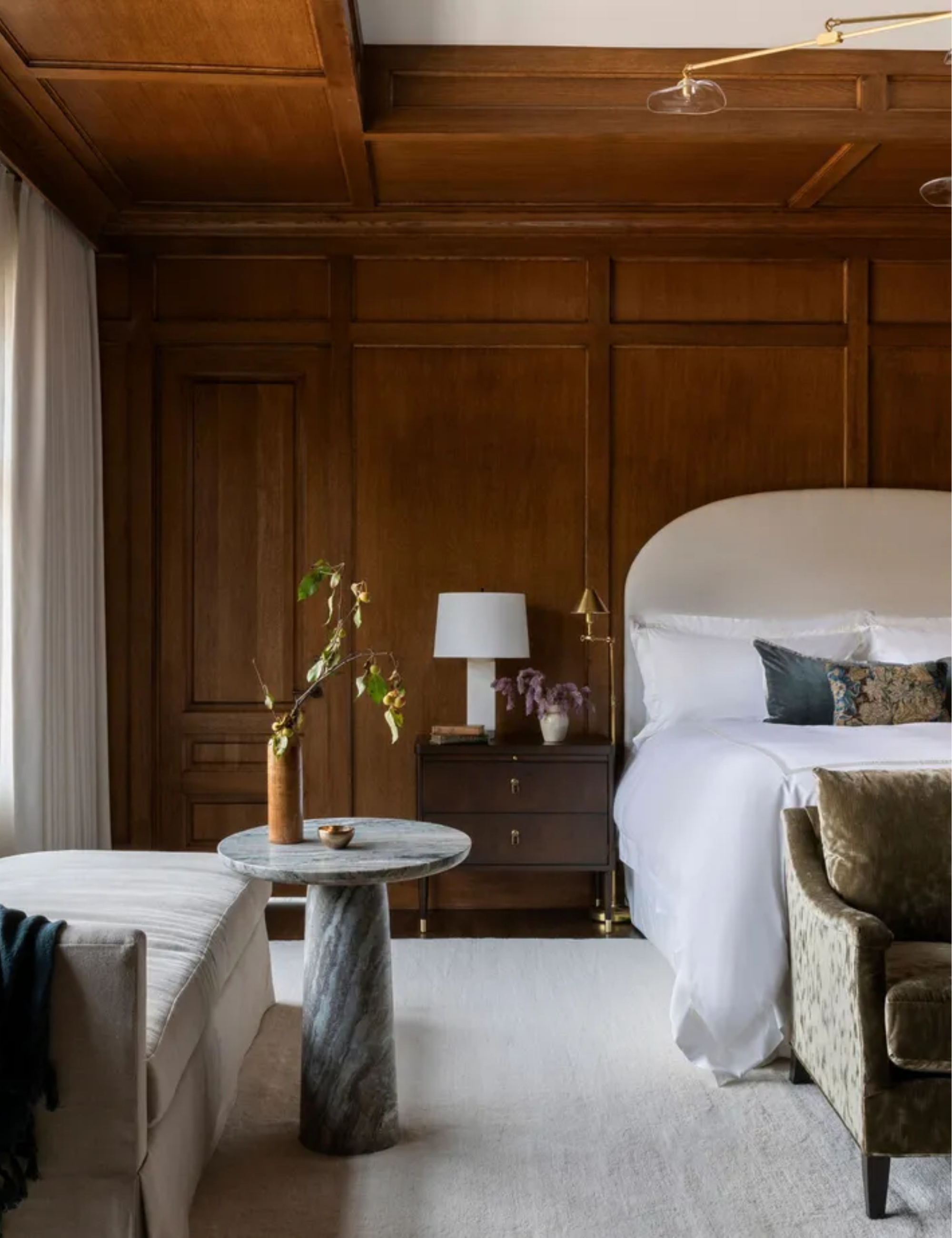
Style and Design Preferences
Your bed frame sets the tone for the entire room – not just now, but for whatever version of you is living here five years from now. Maybe you were briefly obsessed with chartreuse in the summer of 2022; if your baseline aesthetic is coastal neutrals, that fling probably shouldn’t dictate the biggest piece of furniture you own.
Trends can be tempting (oversized built-in headboards will have a moment in 2026), but the trick is to look past micro-aesthetics and follow your actual bedroom design temperament – whether that be minimalist, rustic, traditional, or somewhere in between. There’s endless room to play with silhouette, upholstery, and palette within those guardrails.
Budget
There is truly a bed frame for every budget. You can spend $60 at IKEA and sleep perfectly well, or you can commission a bespoke piece for the price of a used car. Don’t let budget deter you as there will be something you love within your range.
That said, keep expectations honest. A simple but well-constructed solid acacia frame typically lands between $300 and $1,000. Higher cost doesn’t automatically equal higher quality, and affordability isn’t a red flag either. Retailers like Wayfair offer every tier imaginable (with reviews doing some of the curating for you), while places like Anthropologie or Arhaus tend to deliver consistently solid craftsmanship if their price points fit your reality.
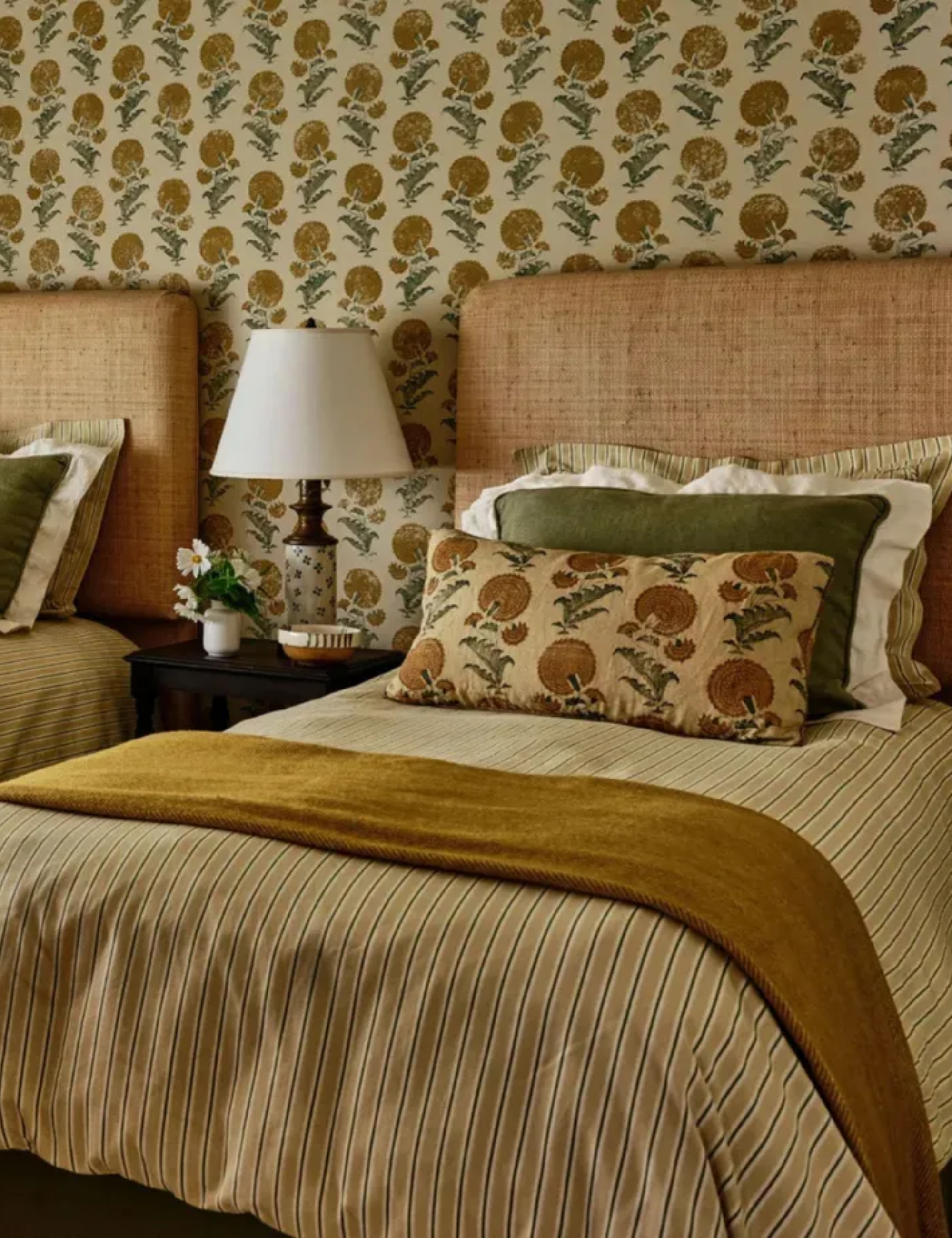
Who's Using It?
The sleeper matters just as much as the style. Your six-foot-four son isn’t going to love a twin when he comes home from college, and a petite guest room still needs to function if two adults occasionally stay the night. A queen is often the diplomatic middle ground for guest spaces, offering a generous enough size without eating the entire footprint.
And if you routinely host more than two? This is where trundles, bunks, or storage hybrids start emerging as the frontrunners.
Height Off the Floor
You’re not imagining it – beds are getting lower. Designers keep pulling from Japanese and mid-century references, which has ushered in a new era of low-slung silhouettes. Taller frames often skew traditional; lower ones read more contemporary.
But aesthetics aren’t everything. You have to actually get in and out of the thing. If you’re trying to be kind to your knees, a floor-hugging frame may feel less poetic at 7 a.m. Similarly, pets and kids have their own accessibility issues. Start by considering who’s climbing in, how often, and with what ease – then let style refine the decision.
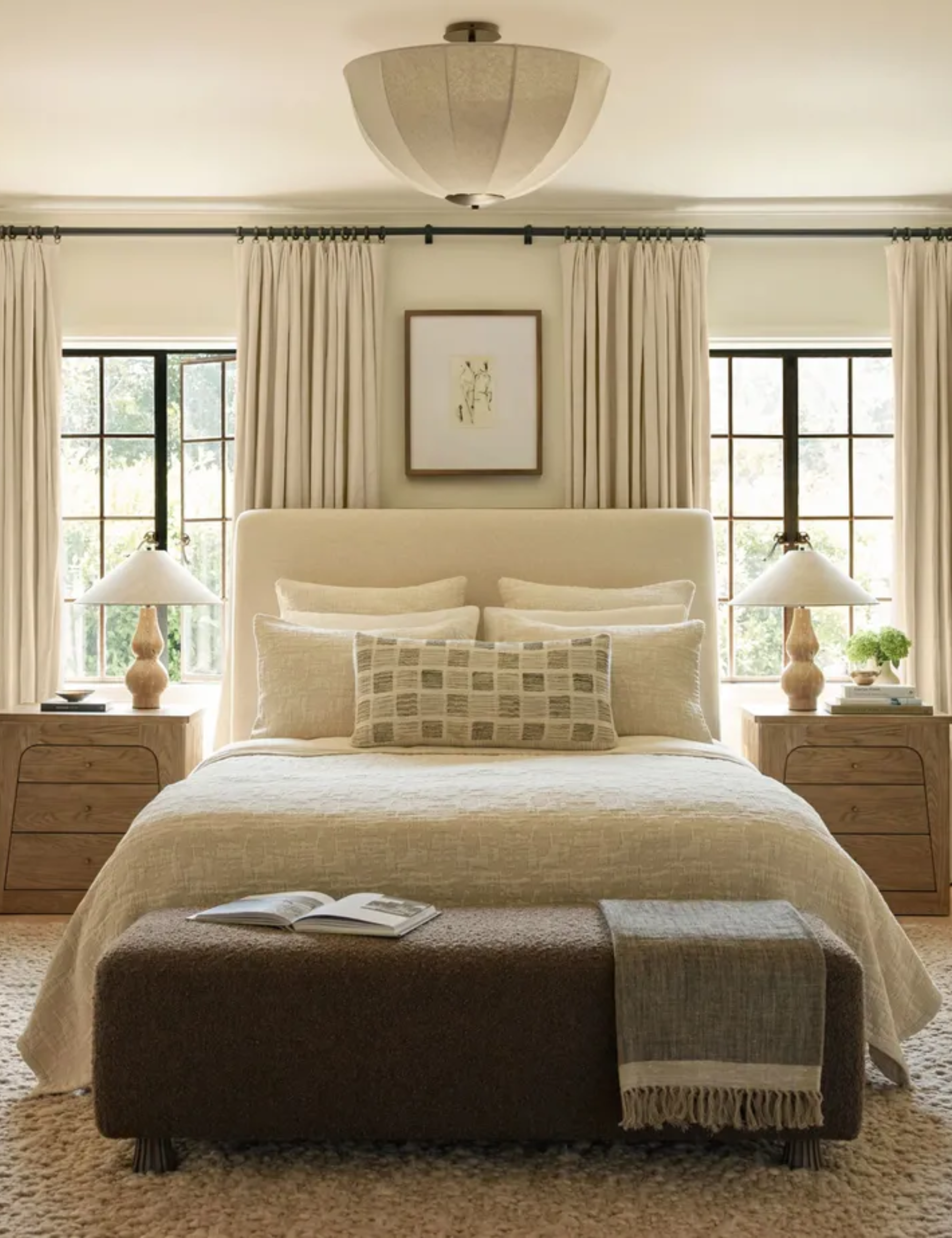
FAQs
Do You Need a Box Spring With All Beds?
Short answer: no. Most contemporary bed frames are designed to support a mattress on their own. A box spring only becomes necessary if you want added lift or if your frame doesn’t offer adequate support – think traditional panel beds, older metal styles, or designs with very wide, widely spaced slats. Otherwise, you can skip it.
How Long Should a Bed Frame Last?
As long as you need it to. For renters or first-time buyers, that may mean just a few years – even the more modestly made frames will survive that timeline. In general, though: solid wood frames can last seven to ten years on the low end, and well past 20 if they’re high quality. Metal frames tend to sit in the 10-to-20-year range, no problem.
Can Any Mattress Fit on Any Bed Frame?
In theory, there’s a lid for every pot. In practice, not every mattress belongs on every frame. Start with the obvious: the bed sizes need to match – twin with twin, queen with queen, you get the gist. But beyond the dimensions, mattress type matters too.
A foam mattress, for instance, needs a solid or properly slatted base to keep it supported. An adjustable bed demands a mattress flexible enough to bend. This isn’t like squeezing into a half-size-too-small pair of sample-sale shoes – a mismatch here can lead to real safety and support issues.
So yes, there is a match for every mattress. Just make sure you’re pairing the right two before you commit.

Julia Demer is a New York–based Style Editor at Homes & Gardens with a sharp eye for where fashion meets interiors. Having cut her teeth at L’Officiel USA and The Row before pivoting into homes, she believes great style is universal – whether it’s a perfect outfit, a stunning room, or the ultimate set of sheets. Passionate about art, travel, and pop culture, Julia brings a global, insider perspective to every story.
- Sarah WarwickContributing Editor